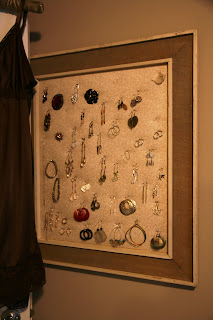This recipe has been used by my great-Grandmother, my Grandmother, my Mother, and now us. I really hope they don't mind me posting it to the interwebs, but it's so simple and easy that I feel compelled to share.
We hot-pack our cucumbers instead of actually canning them. It's easier, faster, and less cleanup. And almost every single jar seals properly. I suppose they won't keep quite as long as if we canned them, but they still last a couple of years. And maybe more than that, but it's rare that they hang around for more than 6 months without being eaten.
[Quick side story... The first year Ken and I got into canning, we made pickles, peaches, peach jam, applesauce, pearsauce, apple butter, pear butter, and brandied pears. All with the intent of making gift baskets for Christmas. However, once he tasted the yumminess of the pickles, he was horribly upset that we were giving them all away. I mean, really upset. So now we make plenty every year to both give away and horde for ourselves.]
Ingredients:
- Cucumbers. We usually buy 2-3 bags, which are 10 lb each. 2 bags makes about 30 quart jars.
- Alum. It's a white powder in the spice section. Not to be confused with Anthrax.
- 3-4 clusters of garlic.
- 2 bunches of dill.
- 1 bag of dried Mexican red peppers. I've used different kinds and they all seem to work fine.
- 2+ jugs of cider vinegar.
- 1 big container of unioidized salt. NO iodine!
Supplies:
- Jars, screw tops, and lids.
- Big pot to make the brine.
- Small pot to sanitize the lids.
- Tongs/forks (to fetch the scalding hot lids from the boiling water).
- Big towels/rags.
Instructions:
1) Start off with clean, sanitized mason jars. Wide-mouth only. The quart and half-gallon sizes work best. The dishwasher works well for sanitizing. If you use still-hot jars, even better.
2) Make the brine and keep near-boiling on the stove. Combine 3 qt water, 1 qt vinegar, 1 c salt.
3) While the brine is heating up, clean all of the cukes. Sometimes they have spiky things on them and it's best to scrub them off. Also, pull the blossom end off. I remember my Grandma and Mom would put them all in the washing machine on the delicate cycle (skip the spin cycle!!!). I think I also tried it once and it worked well. But for smaller batches, it's easy enough to clean them in the sink.
4) Put the lids in boiling water to sanitize.
5) In each sanitized jar, put: 1/4 tsp alum, 2 cloves garlic (peeled and cut in half), 1 head of dill, 1-2 peppers.
6) Stuff as many cucumbers into each jar that will possibly fit. This is the first year that I cut some up into spears, slices, and rounds. But only a few jars in case it doesn't turn out. I'll post an update when we open them up!
7) Pour the hot brine into each jar almost to the top.
8) Place a scalding hot sanitized lid onto each jar and screw shut.
9) Turn each jar upside down and cover with a big towel until they have cooled off (several hours).
10) Turn back right-side up. Check to see that they have sealed. And then use a wet cloth to wipe up all the spills and dried vinegar. I usually put the jars that didn't "pop" into the fridge and eat those first.
The pickles should be ready to eat in a few weeks. Although, prime eatin' time will take a few months.













